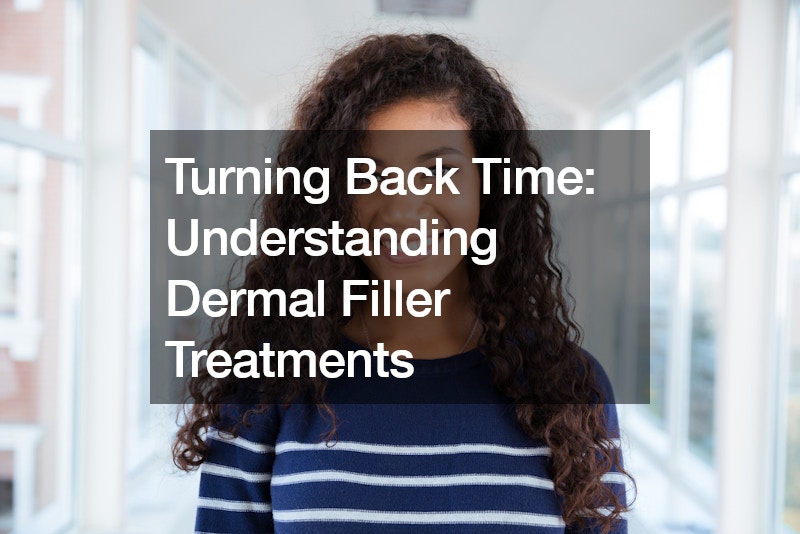The quest for a youthful appearance is an age-old pursuit. While time inevitably leaves its mark on our skin, advancements in cosmetic science offer solutions to combat the visible signs of aging. Dermal filler treatments have become a popular choice for those seeking to restore lost volume, smooth wrinkles, and enhance facial features.
This article delves into the world of dermal fillers, exploring what they are, how they work, the different types available, and what to expect during the treatment process.
Understanding the Science Behind Aging Skin
Collagen and fibroblasts are the building blocks of youthful skin. Collagen provides the framework for plump, elastic skin, while fibroblasts are responsible for collagen production. As we age, collagen production naturally declines, leading to loss of volume, sagging skin, and the formation of wrinkles.
Dermal fillers address this decline by adding volume beneath the skin’s surface. These injectable substances can be made from various materials, each with its unique properties and longevity.
A Range of Options: Exploring Different Types of Dermal Fillers
The world of dermal fillers offers a diverse array of options to suit different needs and preferences. Here’s a look at some of the most common types:
Hyaluronic Acid (HA): Hyaluronic acid is a naturally occurring substance found in the skin. HA fillers are known for their ability to attract and bind water molecules, providing instant hydration and plumping. They are ideal for addressing fine lines, wrinkles, and adding volume to lips and cheeks. HA fillers typically last 6 to 18 months.
Calcium Hydroxylapatite (CaHA): CaHA fillers are a form of calcium that stimulates collagen production, offering a longer-lasting option than HA fillers. They are commonly used for deeper wrinkles, folds, and volumizing areas like the cheeks and jawline. CaHA fillers can last up to two years.
Poly-L-Lactic Acid (PLLA): PLLA fillers work differently by stimulating the body’s own collagen production over time. The results are gradual but can last for up to two years. PLLA fillers are often used to address deeper wrinkles and facial folds.
Polymethylmethacrylate (PMMA): PMMA fillers are a more permanent option, ideal for deep wrinkles and facial sculpting. However, due to their permanence, PMMA fillers are less commonly used and require careful consideration with a qualified dermatologist.
The Treatment Process: What to Expect During Dermal Filler Injections
Dermal filler treatments are minimally invasive procedures typically performed in a dermatologist’s office. Here’s a general overview of what to expect:
Consultation: A thorough consultation is crucial. The dermatologist will discuss your goals, medical history, and assess your suitability for dermal fillers. They will also explain the different types of fillers available and recommend the most appropriate option for your needs.
Preparation: The area to be treated may be numbed with a topical anesthetic to minimize discomfort.
Injection: The chosen filler is injected into targeted areas using a fine needle. The number of injections and the amount of filler used will vary depending on the desired outcome.
Recovery: Following the procedure, you may experience some temporary swelling, redness, or bruising at the injection sites. These side effects typically subside within a few days.
Important Considerations Before Choosing Dermal Fillers
While dermal filler treatments offer a non-surgical approach to a youthful appearance, it’s important to have realistic expectations and consider these factors before making a decision:
Results are not permanent: As mentioned earlier, dermal fillers are temporary solutions. The longevity of the effects depends on the type of filler used and your individual body chemistry.
Consult a qualified professional: Dermal filler treatments should only be performed by a board-certified dermatologist or plastic surgeon with experience in facial anatomy and injectable procedures.
Individual results may vary: The effectiveness of dermal fillers can vary depending on factors like skin type, age, and the skill of the injector.
Potential side effects: While generally safe, dermal fillers can cause temporary side effects like swelling, bruising, and tenderness. There is also a rare risk of more serious complications, such as infection or allergic reaction.
Beyond Wrinkles: Additional Benefits of Dermal Fillers
Dermal fillers aren’t just for wrinkle reduction. They offer a variety of benefits for facial rejuvenation:
Enhancing facial features: Fillers can be used to define cheekbones, reshape jawlines, and add fullness to lips.
Improving facial symmetry: Dermal fillers can be used to correct minor asymmetries in the face.
Addressing acne scars: Certain fillers can be used to improve the appearance of acne scars.
Conclusion
Dermal filler treatments offer a safe and effective way to achieve a more youthful appearance. By understanding the different
.


